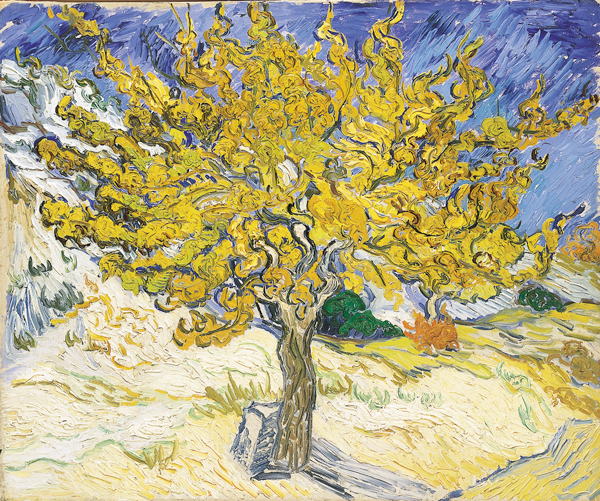Van Gogh’s Mulberry Tree (1889) was a key work in my conversion to appreciating the pleasures of modern art. When I first saw it as an undergraduate student at UC Berkeley in the 1970s, it was still in the collection of the Palace of the Legion of Honor in San Francisco. I vividly recall the trip over the Bay Bridge in my friend’s Volkswagen bug, on our way to explore the collection for the first time. Readers may remember the Palace as being one of the key locations in Hitchcock’s masterpiece Vertigo, a film I had at the time just recently seen. This being San Francisco in the ’70s, we had of course fired up a fatty in preparation for our viewing experience, which actually seemed to have had no effect on our perception of the works of art, until we happened upon the van Gogh. A rather small canvas at 21 1/4 x 25 1/2 inches, its diminutive scale belies the explosive visual assault it presents. Resembling a tree only in the most rudimentary way, the image really looks more like flames, but even back then it was clear to me that mimesis was not the artist’s intention. Rather than looking like a tree, the work was able to evoke the inner essence of its subject; it seemed the actual life force of the tree was pulsating and swirling before my eyes, like a psychedelic animation.
I had never seen a painting do this before, and it changed the way I think about painting, especially abstract painting, forever. Subsequently, the work was acquired by the Norton Simon, just in time for my move from Northern to Southern California, and its current location is just 10 minutes from my home. A true gem in one of the region’s great collections, it still has the power to work the same optical magic I experienced as a fledgling art student all those years ago.


